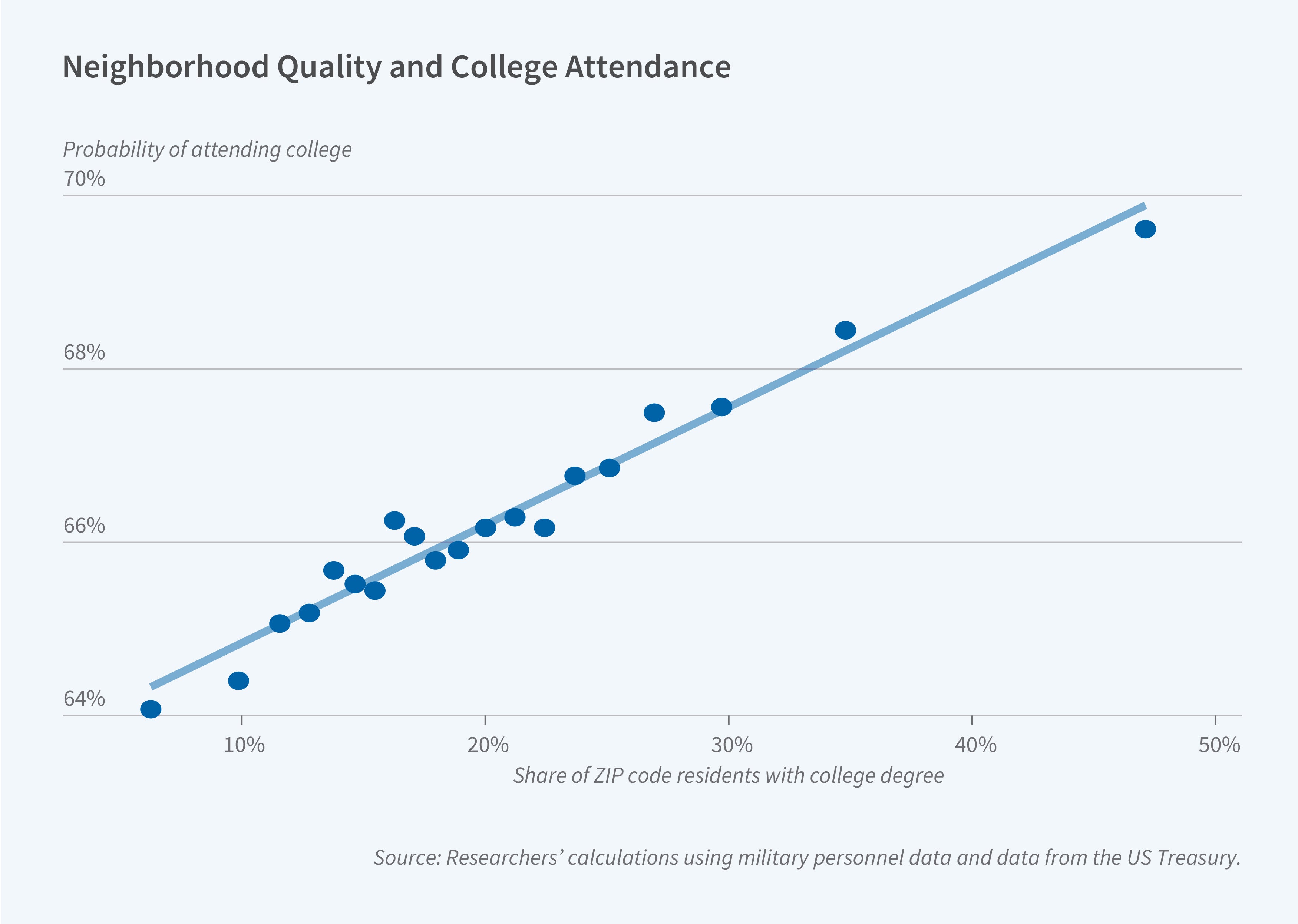Neighborhood Quality and Children’s Outcomes: Insights from Military Families

The United States Army Human Resources Command annually assigns hundreds of thousands of soldiers to global positions based on military needs, prioritizing these over individual preferences. Assignments are determined by a soldier’s primary military occupational specialty and rank. Service members of the same specialty and rank are considered interchangeable, which results in essentially random assignments within these categories.
In On the Determinants of Young Adult Outcomes: Impacts of Randomly Assigned Neighborhoods for Children in Military Families (NBER Working Paper 32674), Laura Kawano, Bruce Sacerdote, William L. Skimmyhorn, and Michael Stevens exploit this quasi-random assignment to examine the impact of the neighborhood children live in on their future economic outcomes. They link military personnel data spanning the 1990 to 2017 period to administrative tax records.1 Their database includes information on about 500,000 service members and their 800,000 children. They focus on junior personnel, who have minimal influence over their assignments.
Life outcomes for children in military families, who move frequently, are better if they spend more childhood years in higher-quality neighborhoods.
The researchers estimate positive and statistically significant effects of neighborhood quality on various outcomes. A typical 3.5-year assignment to a location where the share of the population with bachelor’s degrees is 10 percentage points above average correlates with a 3.5-point increase in SAT scores and a 0.4 percentage point increase in a child’s college attendance probability. Extended exposure amplifies these effects: two decades in a county 1 standard deviation above average in terms of college-educated population share is associated with SAT scores that are 10 points higher and a college attendance rate increase of 1.7 percentage points. When measured at the ZIP code rather than county level, the impact more than triples to 38 points and 6.6 percentage points, respectively. This suggests more localized neighborhood characteristics exert stronger influences on outcomes.
Neighborhood quality during a child’s high school years has the most significant impact on college attendance. Assignment to a county with a 10 percentage point higher college graduate share raises college attendance by 0.09 percentage points per year of exposure during preschool ages, but by 0.19 percentage points per year during high school. For SAT scores, the effect is strongest during middle school years. Similar neighborhood effects are observed across racial groups, implying that the Army’s assignment process may reduce racial disparities by equalizing the environments to which children are exposed.
The study also explores how neighborhood quality influences the income of young adults. Growing up in a better-quality neighborhood increases earnings at age 25, raises the likelihood of tax filing in young adulthood, and reduces the probability of claiming the Earned Income Tax Credit.
—Leonardo Vasquez


